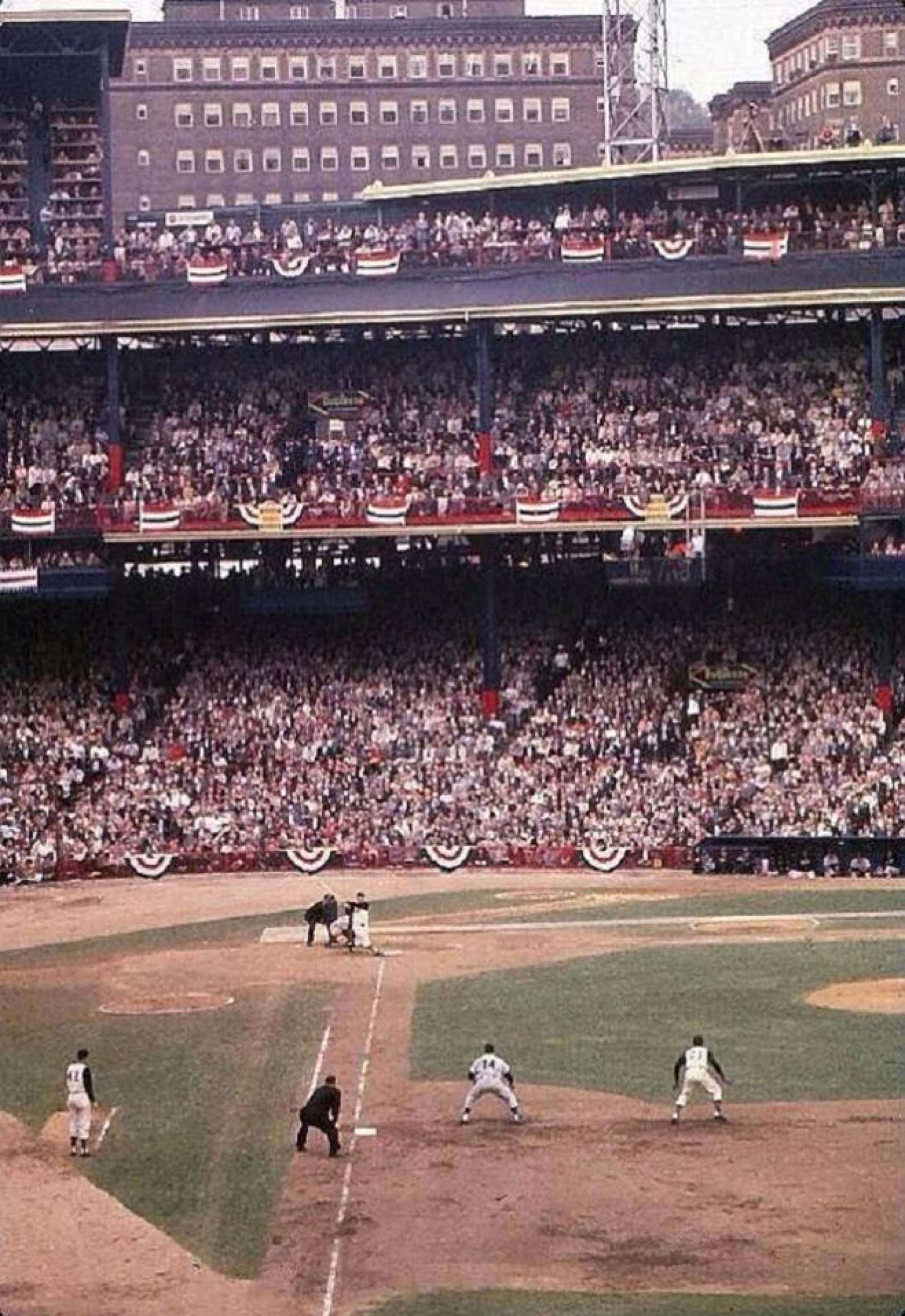Featured Panoramic Photo Above:
Scene from the 1960 World Series
Baseball History Comes Alive Now Ranked As a Top Five Website by Feedspot Among All Baseball History Websites and Blogs!
(Check out Feedspot's list of the Top 35 Baseball History websites and blogs)
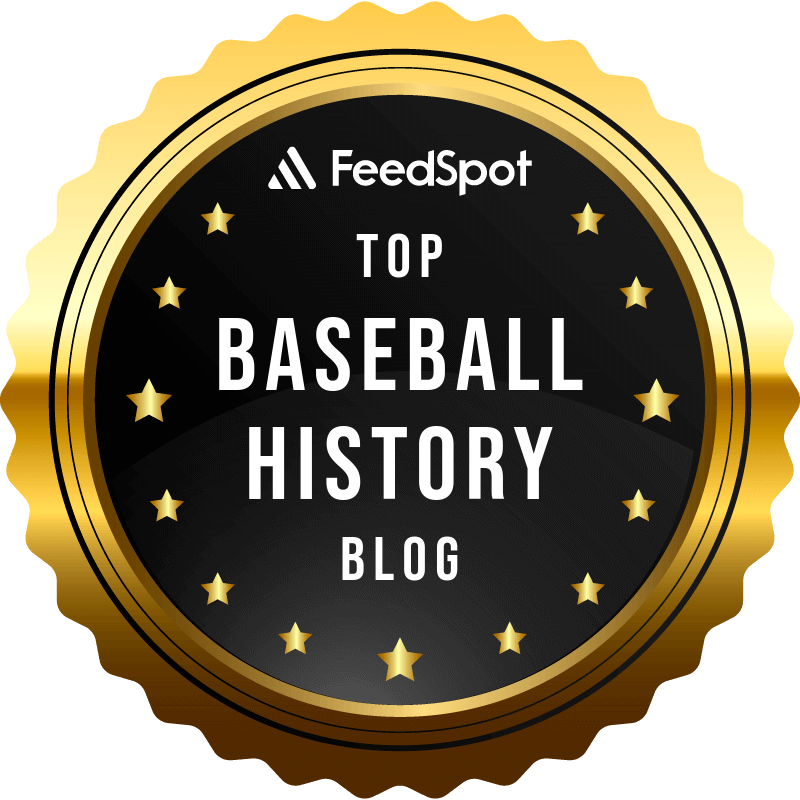
Guest Submissions from Our Readers Always Welcome! Click for details
Visit the Baseball History Comes Alive Home Page
Subscribe to Baseball History Comes Alive
Free Bonus for Subscribing:
Gary’s Handy Dandy World Series Reference Guide
We welcome back Ron Christensen with a detailed look into one of baseball’s forgotten stars from the nineteenth century, John Montgomery Ward. As Ron demonstrates, JMW was truly a “jack of all trades,” and one of baseball’s great innovators. Many of his contributions led to the evolution of the modern game. In the featured photo, we see the 1883 New York Gothams (later, Giants), with JMW standing on the far right with his arm on the shoulder of the great nineteenth-century star, Roger Connor– GL
Another Edition of
Baseball’s Forgotten Stars:
John Montgomery Ward
19th Century Baseball’s “Jack of All Trades”
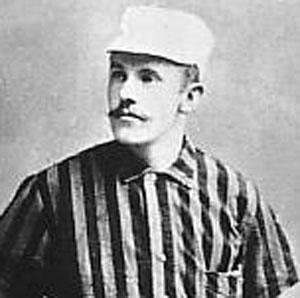
John Montgomery Ward was a baseball star of a bygone era, and through the passage of time and the evolution of the game, his name is long since forgotten or too little mentioned to be recognized by other than avid fans of baseball history. Ward was not only a baseball star in his day, but a trailblazer who did much to advance the game and the interests of those who played it. As is etched on his Hall of Fame Plaque in Cooperstown, Ward “Played (an) Important Part in Establishing Modern Organized Baseball.” (1)
If asked the question, ‘Which of the following apply to John Montgomery Ward?’ how would you respond?
- Won 69 games as a National League pitcher before turning 20 years old. (2)
- Pitched the longest complete game shutout in baseball history, a 1-0 win in 18 innings. (3)
- Is the only player in history to amass 2,000 career hits and 150 pitching victories. (4)
- Pitched the second-ever Perfect Game in baseball history. (5)
- Organized the first-ever Players Union in major league baseball. (6)
- Created a competing major league to rival the National League and American Assn. (7)
- All of the above.
If you selected ‘All of the above’, and I know you did, you’d be correct. In fact, Ward had so many achievements in baseball I probably could have run every letter in the alphabet with one of them, and moved the ‘all of the above’ selection to letter ‘Z’. Discussing them all is well beyond the scope of this short essay, so I’ll try to address the highlights of some of them.
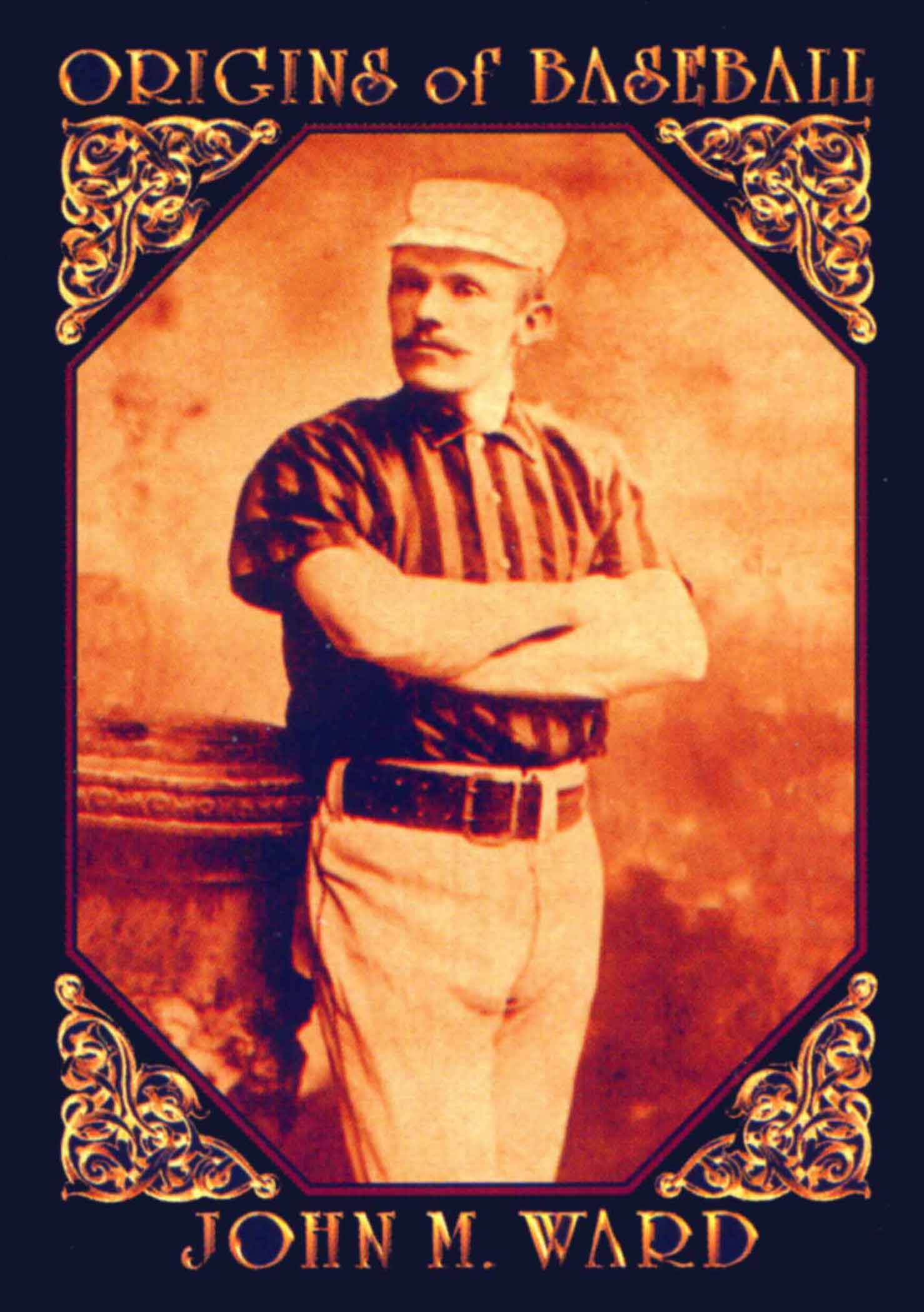
Ward’s career as a player spanned seventeen seasons, from 1878 to 1894. (8) He began his career as a pitcher with the Providence Grays, then a member of the National League. Ward was 18 years old when he signed with the Grays in July 1878, and at the time was the league’s youngest player. (9) He pitched the final 32 games that season, posting a 22-13 record with a league-leading 1.51 ERA in 334 innings pitched. The following season, Ward improved his record to 47-19, with a 2.15 ERA in 587 innings pitched. His 47 wins, .712 winning percentage, and 239 strikeouts were all tops in the league. In 1880, Ward finished the season with a 39-24 record and a 1.74 ERA over 595 innings. His eight shutouts led the league. (10)
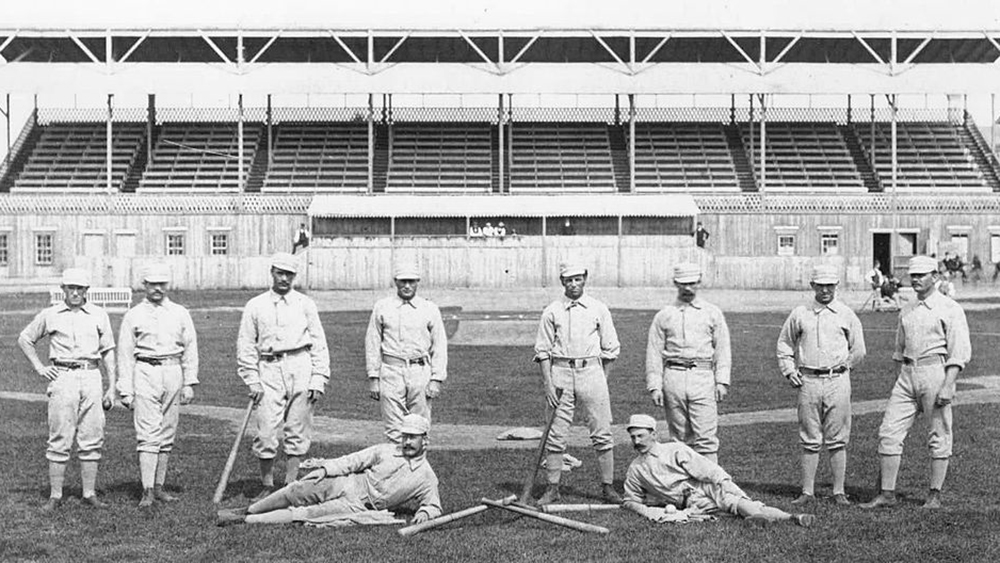
In less than three full seasons, Ward pitched a staggering 1516 innings. (11) Not surprisingly, the innings took their toll, and by 1881, Ward was suffering from arm fatigue. (12) He limited the innings he pitched that year and decreased these each season until 1885, when he stopped pitching altogether. (13) To compensate, Ward reinvented himself as an outfielder and even taught himself to throw left-handed after suffering an injury to his right arm sliding into a base.
In 1883, Ward was sold by the Grays to the New York Gothams (later ‘Giants’), and by 1885, with his arm fully healed, he became their full-time shortstop, leading them to pennants and championship titles in 1888 and 1889. (14)
Never one to remain idle, Ward attended law school at Columbia University after being traded to New York and received his law degree in 1885. That same year, Ward organized the Brotherhood of Professional Baseball Players, America’s first sports labor union. (15) His first order of business was to take on baseball’s Reserve Clause, a provision included in every player’s contract that effectively tied the player to his team forever, unless the team elected to trade or sell him, something a player had no voice in approving. (16)
Ward likened the Reserve Clause to sanctioned slavery, commenting that,
“Like the Fugitive Slave Law, the Reserve Clause denies the player a harbor or a livelihood and carries him back, bound and shackled, to the club from which he attempted to escape, resulting in serfdom which gives one set of men a life-estate in the labor of another.” 17
In Ward’s view, Baseball needed to open itself to normal market conditions and free enterprise. He said,
“Let the business of baseball rest on the ordinary business basis. Don’t try to regulate salaries through arcane and insulting restrictions. Rather, trust the market. Eschew old-fashioned and high-handed practices, and make baseball a modern business.” 18
This was certainly forward – even radical – thinking for its day, as the Reserve Clause would remain a standard provision of player contracts until struck down in 1975, opening the door to free agency. (19)
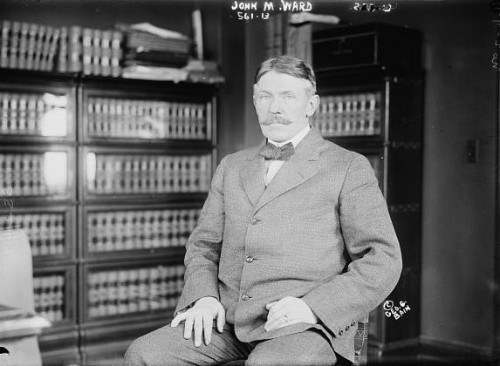
Following the 1888 season, baseball owners furthered their resolve in the Reserve Clause, devising a classification scheme that assigned each player a classification (A through E) based on each owner’s subjective evaluation of his performance and value to the team. Each class was imposed with strict salary restrictions. (20) Ward led the charge against this scheme, but the owners wouldn’t budge. White Stockings owner, Albert Spaulding, referring to Ward, publicly commented, “I want to fight until one of us drops dead!” (21)
Ward’s response to all of this? He created an entirely new baseball league, the Players League. Players were given three-year contracts with no reserve clause. Investors were promised the first $10,000.00 of the team’s net profit, with the remainder being divided as profit-sharing among the players. (22) Almost all of the players who had joined Ward’s Players Union, which included many prominent stars, agreed to sign on with the new league. (23) The Players League opened its inaugural – and only – season in 1890. It outdrew the National League at the gate, but its investors, not realizing a profit, panicked and sold their teams to the National League owners. (24)
The formation of a new league, radical in concept and brash in existence, was just one of the many ideas and innovations Ward brought to the game of baseball. He is said to be the first pitcher to develop and use a curveball in a major league game. (25) He is also credited with developing the first raised pitcher’s mound, (26) and with writing and publishing the first baseball handbook in 1888. (27) Ward also developed several innovative infield techniques, including signaling for pitch-outs to prevent stolen bases, and using the intentional walk to increase the chances for a double-play. (28)
During his career, Ward served as a player-manager for all or portions of seven seasons (29), was part owner and president of the Boston Braves (1911-1912), and in 1914 was the Business Manager of the Brooklyn Tip-Tops of the short-lived Federal League. (30)
Infielder, outfielder, pitcher, innovator, leader, organizer, rebel, visionary, manager, owner, and Hall of Famer – John Montgomery Ward did it all. He truly was the ‘Jack of All Trades’ of nineteenth-century baseball.
Ron Christensen
CITATIONS:
- org
- Wikipedia – John Montgomery Ward
- Wikipedia – John Montgomery Ward
- com – Baseball’s Most Interesting Character, by Mike Attiyeh
- org – John Montgomery Ward, by Bill Lamb
- com
- org – John Montgomery Ward, by Bill Lamb
- Baseball Reference – John Montgomery Ward
- org – John Montgomery Ward, by Bill Lamb
- Baseball Reference – John Montgomery Ward
- Baseball Reference – John Montgomery Ward
- Centre County Historical Society – John M. Ward
- Baseball Reference
- Wikipedia – John Montgomery Ward
- Chicago-Kent College of Law – John Montgomery Ward: The Lawyer Who Took On Baseball
- org – The Making of a Baseball Radical, by Cynthia Bass
- com
- org – The Making of a Baseball Radical, by Cynthia Bass
- com
- org – John Montgomery Ward, by Bill Lamb
- com
- Chicago-Kent College of Law – John Montgomery Ward: The Lawyer Who Took On Baseball
- org – John Montgomery Ward, by Bill Lamb
- org – The Making of a Baseball Radical, by Cynthia Bass
- org – The Making of a Baseball Radical, by Cynthia Bass
- com – Changing the Game, John Montgomery Ward
- org – The Making of a Baseball Radical, by Cynthia Bass
- Chicago-Kent College of Law – John Montgomery Ward: The Lawyer Who Took On Baseball
- org
- org – John Montgomery Ward, by Bill Lamb
- Wikipedia – John Montgomery Ward
- Wikipedia – 1894 New York Giants
We’d love to hear what you think about this or any other related baseball history topic…please leave comments below.
Subscribe to Baseball History Comes Alive. FREE BONUS for subscribing: Gary’s Handy Dandy World Series Reference Guide. https://wp.me/P7a04E-2he
